SurfboardsA Journey Into Alternative Surfing: The Felipe Siebert Interview
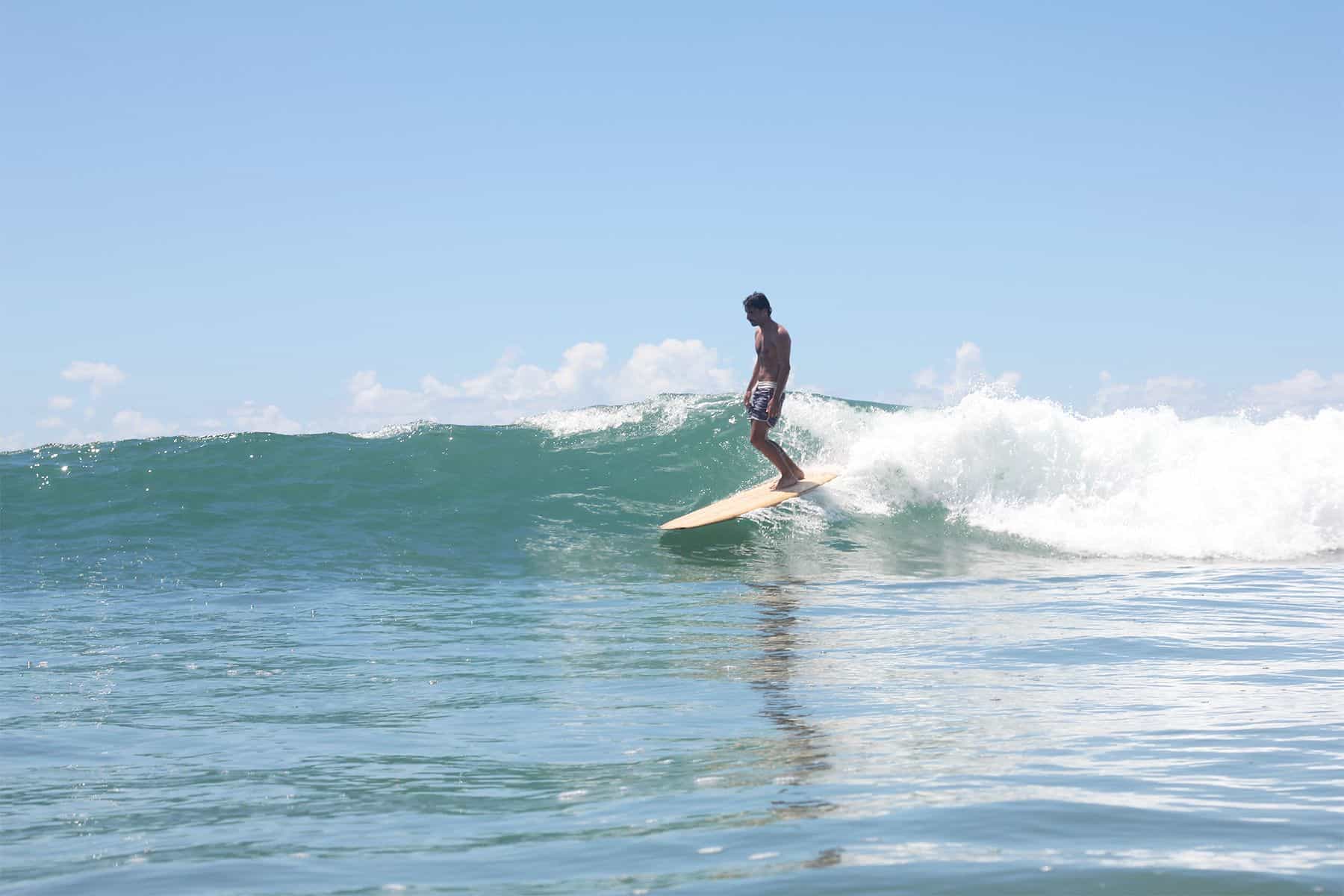
Today, the word “alternative” (as an adjective) has been so overused that we often forget what it actually means and when it deserves to be used – everything has an alternative appeal. According to the Oxford Dictionary, though, its definition falls into two main specs:
ALTERNATIVE
al·ter·na·tive
adjective
“the various alternative methods for resolving disputes”
“an alternative lifestyle”
- (of one or more things) available as another possibility or choice.
- relating to activities that depart from or challenge traditional norms.
Yet, the truth is that this word and its definitions mutate with the passing of time: what was “alternative” a few decades ago now becomes the thing that we seek an alternative for. It’s a paradox, an endless cycle that, in a way, stimulates creativity and entices our species to constantly search for a better version of ourselves.
This pursuit for either application of the word “alternative” is very much true in the modern surf culture, where both surfers as well as those involved in the industry seem to be on a hunt for alternative outlooks, partially because it is seen as “sexy” but also because there are often benefits to taking a different approach. When scrolling down on our magazine’s feed, you will come across examples, such as alternative surfboard layouts or alternative materials. Heck, the very essence of Surf Simply is based on an alternative approach.
Florianopolis, a small island in the south of Brazil, is one of the country’s hubs for surfing. Among the various beach breaks, buildings and bikini-clad visitors of this surf town, a young biologist with an entrepreneurial streak began his own journey into surfing. Eventually, this led him down another path, that of establishing an alternative surfboard business; always evolving, questioning, and looking for new alternatives (noun).
His name is Felipe Siebert and below is a translation of the chat he had with Surf Simply.
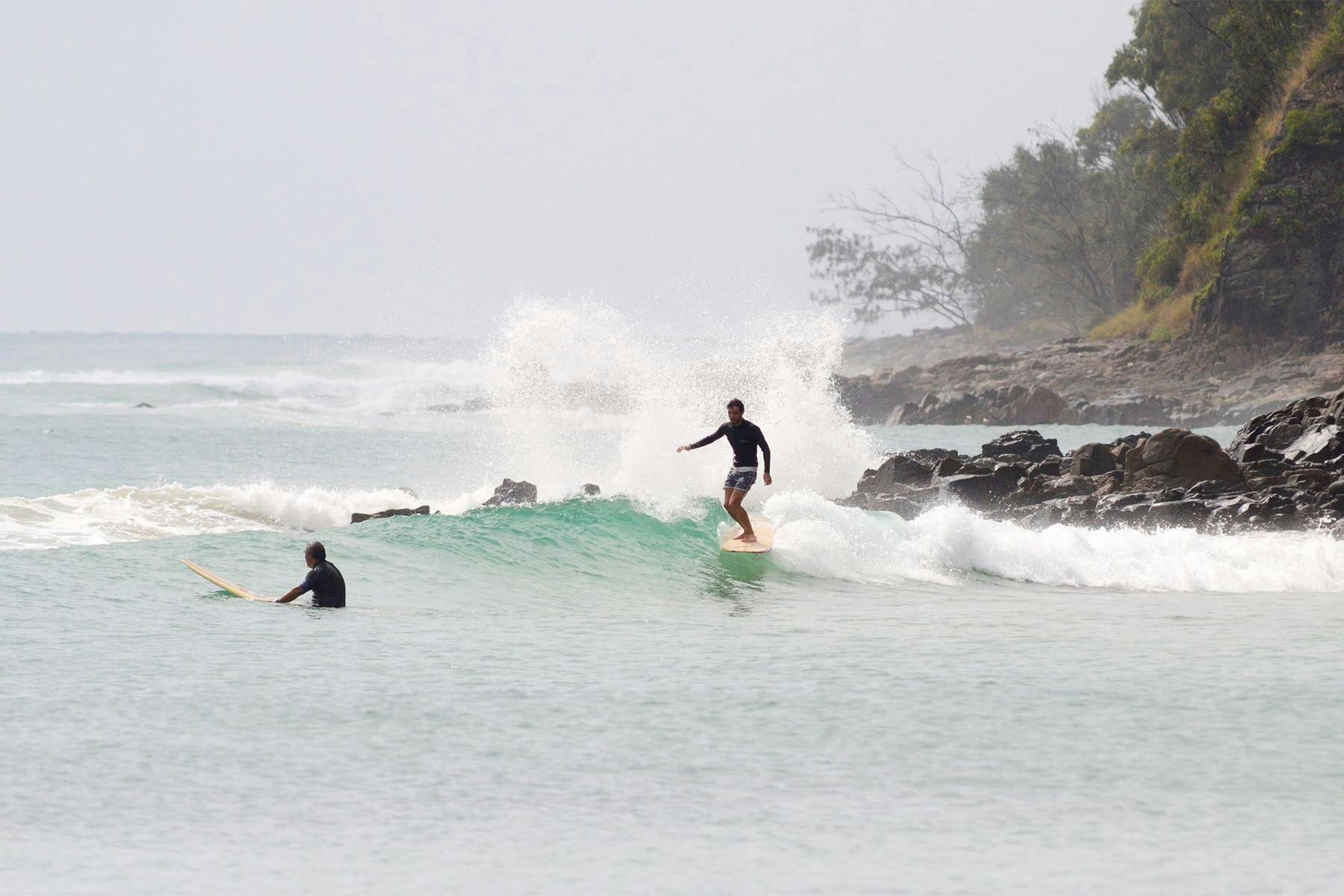
Let’s start at the beginning, can you tell us what brought you into the world of surfing and ultimately, shaping?
Initially, the strong local surfing influence in Florianópolis directed me to shortboards. Only after 9 years of surfing did I experience a longboard for the first time and, from my point of view, it was another sport. It was almost like starting to surf again. I liked the fact that the traditional longboard surfing (classic longboards) was totally different from the shortboards and made it a lot easier to have fun on small days. Eventually, I tried to buy a longboard, but as my idea was classical surfing, why not a wooden board?
I began looking for one but at the time (2006) there were very few options. I managed to find one or two relics in São Paulo, yet with a price that was far beyond my budget of Biological Sciences student. However, in this search, I came across the hollow boards shaped by Tom Wegener and Grain Surfboards. So I thought, “why not try to make one?”. Despite the lack of experience, my first wooden hollow project was very interesting and only required a few adjustments to the dimensions and glassing to work properly.
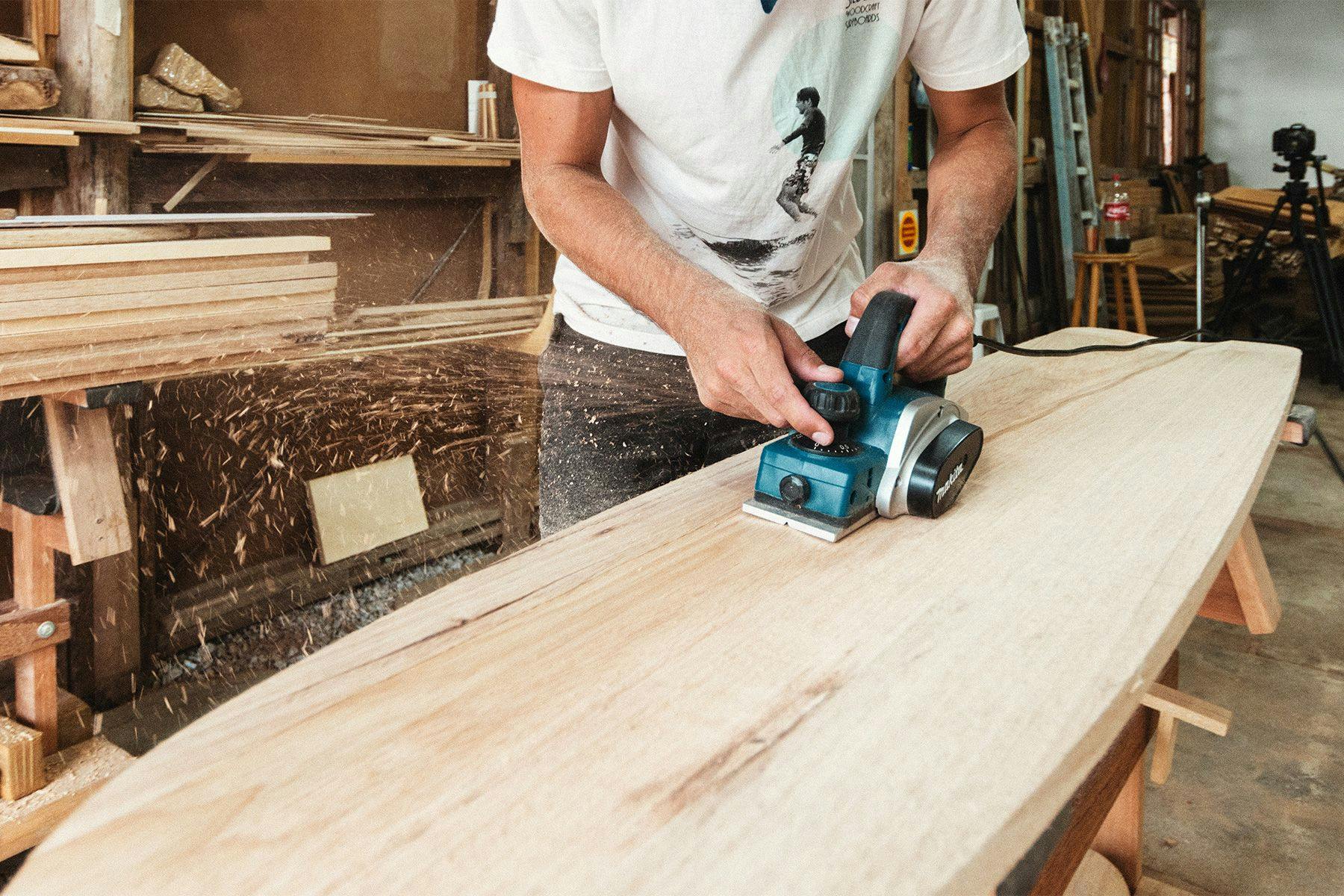
“Only after nine years of surfing did I experience a longboard for the first time and, from my point of view, it was another sport. It was almost like starting to surf again.”
Over the last few years, Siebert Surfboards has grown from a surfboard brand to producing a range of surf accessories and even garments. Can you briefly run us through this journey?
In Brazil, surfboard brands are all still relatively small. In terms of big names within our national market, there are some international brands that started to make boards in Asia, with doubtful quality and labor procedure, obviously for the low prices and high margins. However, these are not surfboard shapers – they are just investors. That being said, I feel like there are some advantages to the fact that we as a brand are still relatively small. As a business, Siebert Surfboards has grown but the idea is to keep it as a “craft production” that allows us to have more freedom in several aspects, including our working hours and time for surfing and travel, obviously.
Our audience consists of a very specific niche (hollow wooden boards) within the very specific niche which is classical longboards. Such kind of public has grown outside Brazil and this trend has been appearing here as well, so we are optimistic about the future. The boards we make are rarely the only board of the client, so many of our customers are surfers who wish to build a good quiver. Interestingly, some of our customers are also people connected to design, which makes us realize that we are making good decisions on the visual aspects of the brand. We are “lucky” to have a very specific public with a keen eye for detail, as this encourages us to continue at full speed. It’s cool when I get feedback from guys like Rafael Mellin (director and producer at TV channel OFF), Tom Wegener (who will always be one of my biggest inspirations) and any other people I look up to in and out of the world of surfing.
Nonetheless, we are surfers and use surf-related products often. Hence, boards can have an aesthetic appeal and be made of alternative materials, but it has to work well in the water, otherwise, in my view, it would not be a good product.
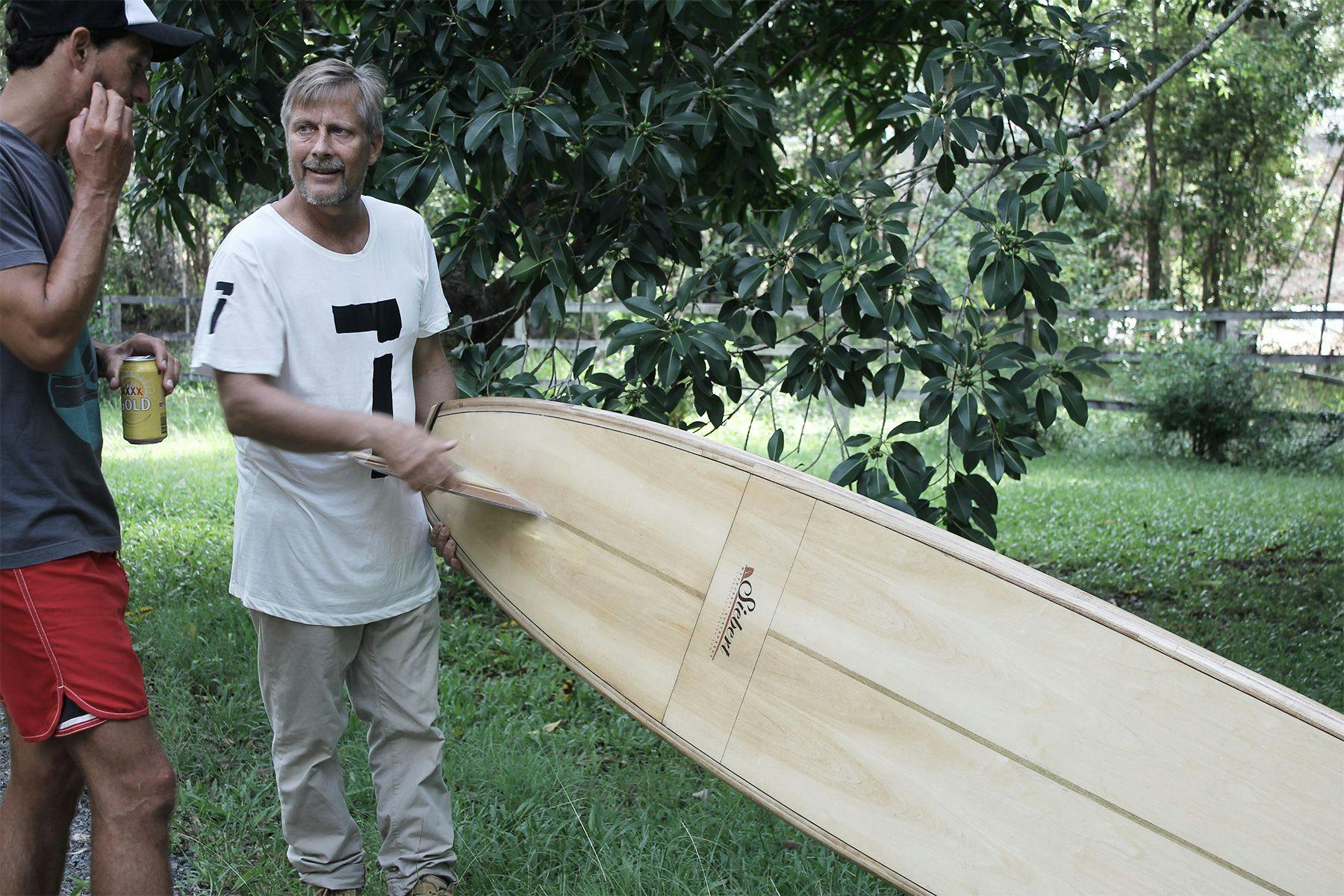
“As a business, Siebert Surfboards has grown but the idea is to keep it as a “craft production” that allows us to have more freedom in several aspects, including our working hours and time for surfing and travel, obviously.”
If someone scans your Instagram feed, it will be clear that you have been involved in the production of surfboards made of cork – AKA corky. How did you come across this material? And what caught your attention?
During a visit to Australia a couple of years ago I met with Tom Wegener, who was also thinking about starting to work with cork. We had a chat and he suggested that we do the same type of construction using cork, here in Brazil. We got the project going and managed to develop things quite quickly, also partnering up with shaper Rodrigo Matsuda, from Lasca Surfboards in Guarujá – SP.
Previously, I had thought about the possibility of making wooden boards with an EPS core but it did not really make sense since I already made hollow boards. Since cork needed more support, EPS ended up being an excellent match. Plus, other aspects like not needing to apply wax as well as the simplicity of cork, really caught my attention from the beginning. The result was an extremely light surfboard – which does not make much difference in the case of longboards but it does on shortboards when we need more agility.
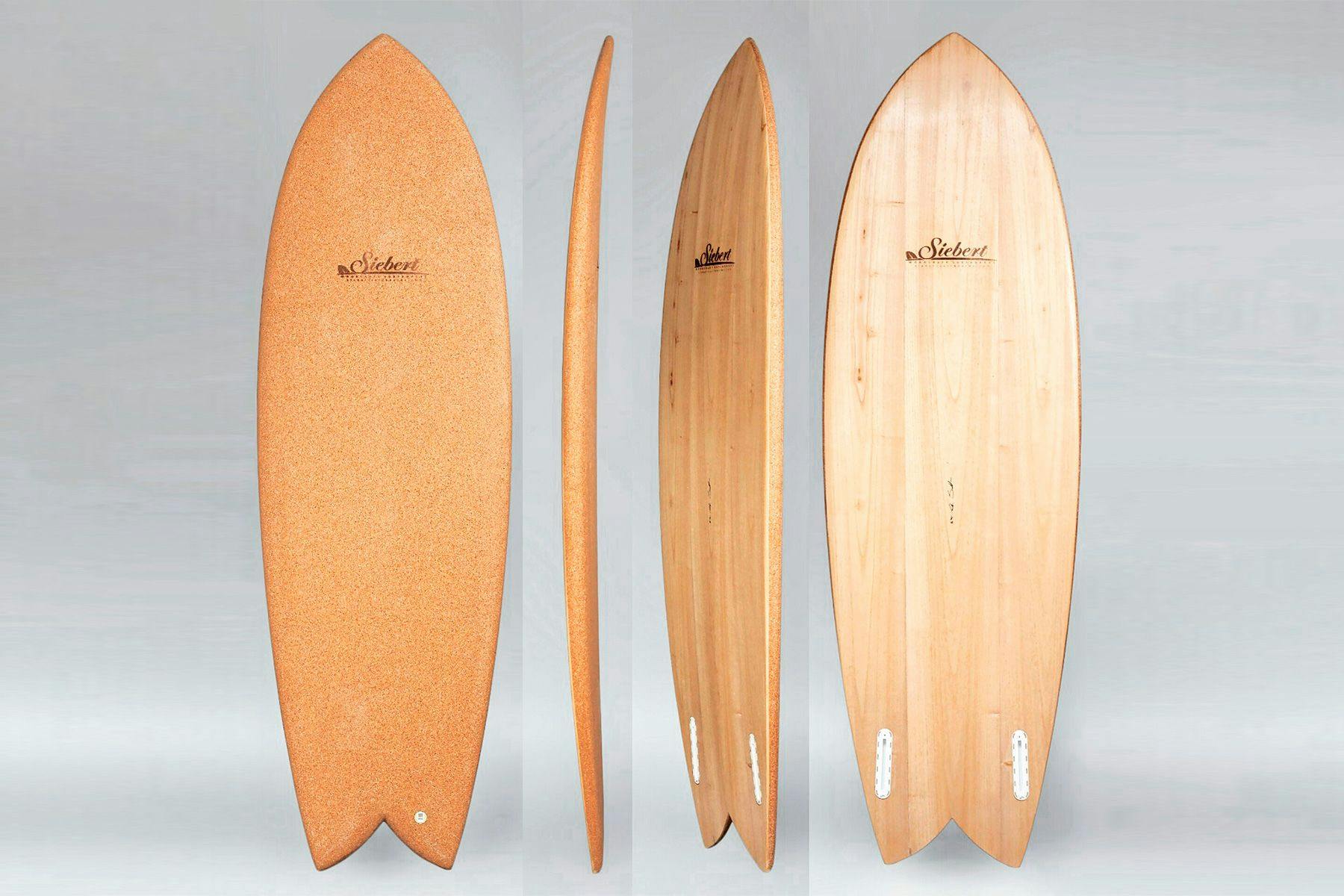
How about the production process of a corky?
The core of a corky is formed by an EPS block, the same one used in epoxy boards. After finishing the shape, the cork is vacuum glued onto the deck and rails; the bottom wood veneer is glued in the same way. It may look and sound like a simple process, but the details of bonding, fitting and sealing present a lot of complexity and are fundamental for making it truly waterproof since this kind of board is not glassed. Finally, the board receives a “varnish”. This last stage is already well established but we are trying to test more natural options.
In terms of performance, what can one expect when surfing a corky?
I consider it to be basically the same surf of a board constructed with conventional materials, the main difference being the texture of cork. Of course, shape designs vary in the same way they would vary from one shaper to another, each with its particular view of the layout. At Siebert, we always work with “alternative shapes”, like the Fish, Mini-Simmons, among others. Still, nothing would prevent us from creating a high-performance board with these materials since, with the way we have been building them, the boards have been coming out with the same weight as the conventional ones.
What about the production cost and average retail price of a corky?
We have pretty much the same costs as a conventional board because we only replace some materials. What makes a corky more expensive is the question of the rarity of the woods we work with and the shaping techniques that are more complex and unusual. Usually, in the national market, they have the final price of around R$ 1,700 (U$ 430).
In your opinion, what is left to develop in the raw material or production process of this kind of surfboard?
I can only say that within Siebert’s possibilities, there is little to develop. Most of it has to do with the refinement of some techniques, both to improve finishing as well as to optimize the production time. Still, the constant search of new materials, over time, will tell us if we are with the best that is possible at the moment, or if the tests can bring a better version of this kind of board.
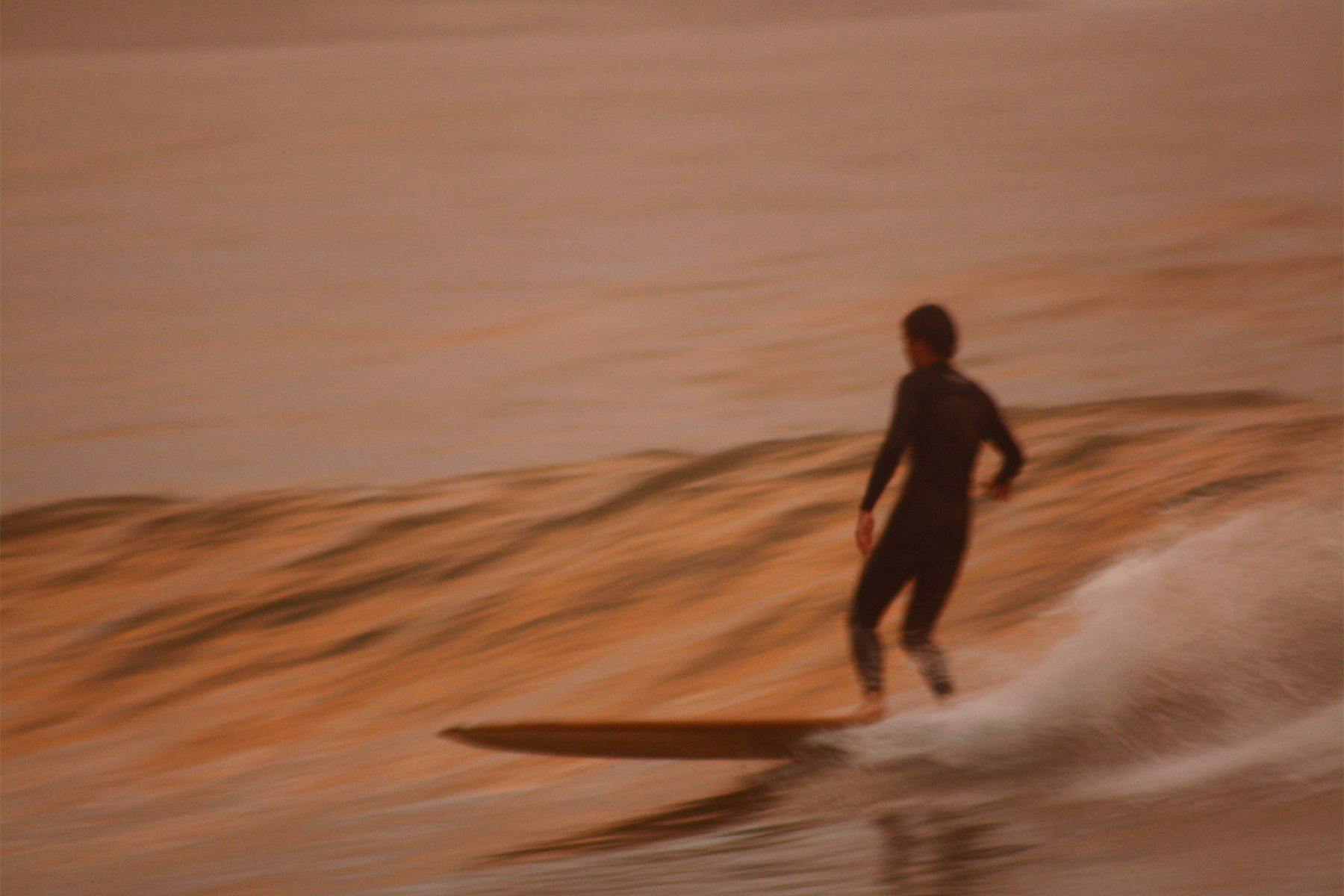
Finally, do you reckon we will one day see corky surfboards in the World Tour?
As a matter of fact, Josh Kerr has already been surfing with high-performance aluminium-cork hybrid boards. I think that a corky has the potential to be the same as a conventional board, but being the same, there would be no reason for choosing it. I believe that the standard of high-performance competition boards used on the pro tour will only change significantly the moment someone creates a board with a really superior material. I also believe that an “evolution” in terms of materials is more related to the issue of a given shape being directed to manoeuvres that will be valued by the judges. The professional circuit is often seen as the apex of surfing or even surfboard design, but that is far from being true. Indeed, the pro tour is made up of some of the best surfers, but more than only surfers they are highly competitive people. Yet the reality of surfing is generally different; surfing simply exists as a means to have fun and in this case, the goal of the shaper should be associated with creating a craft that will provide good times.
Find out more about Filipe’s alternative surfboards at www.siebertsurfboards.com